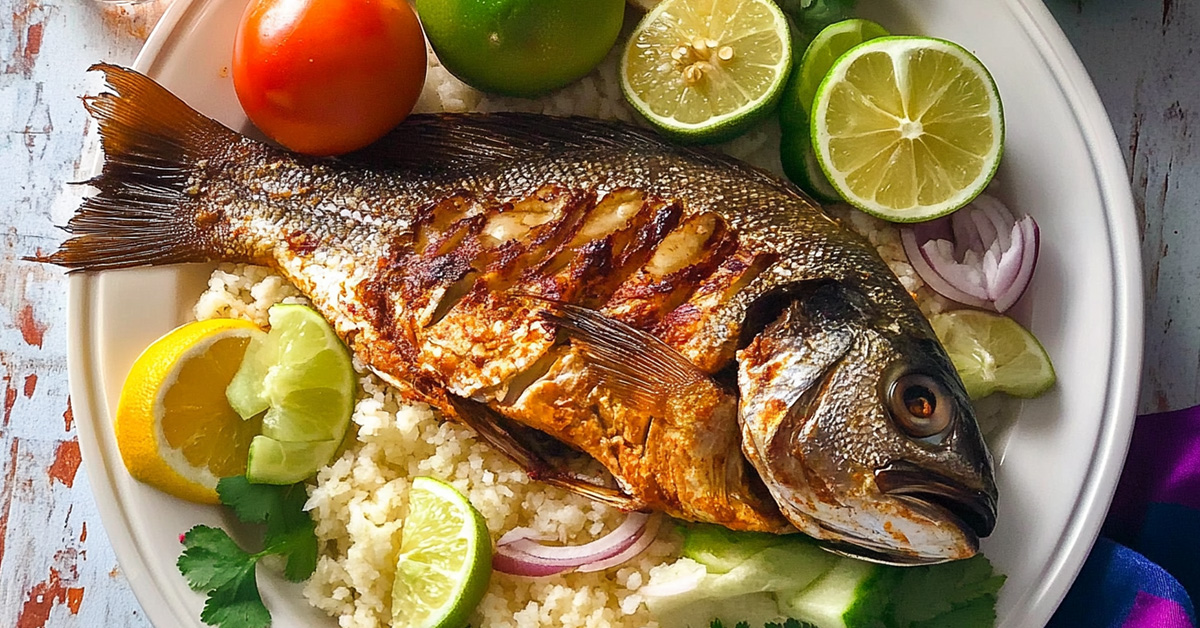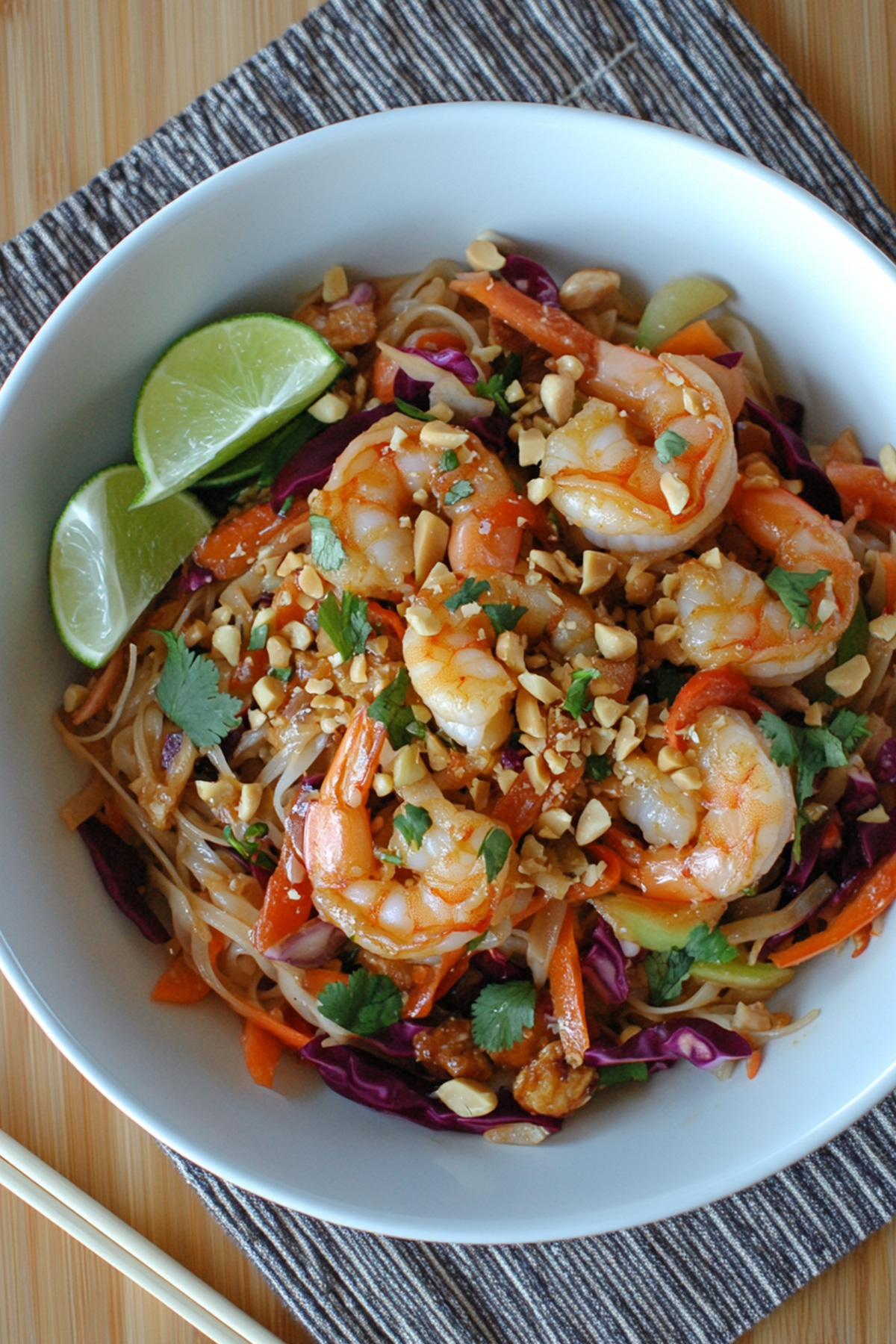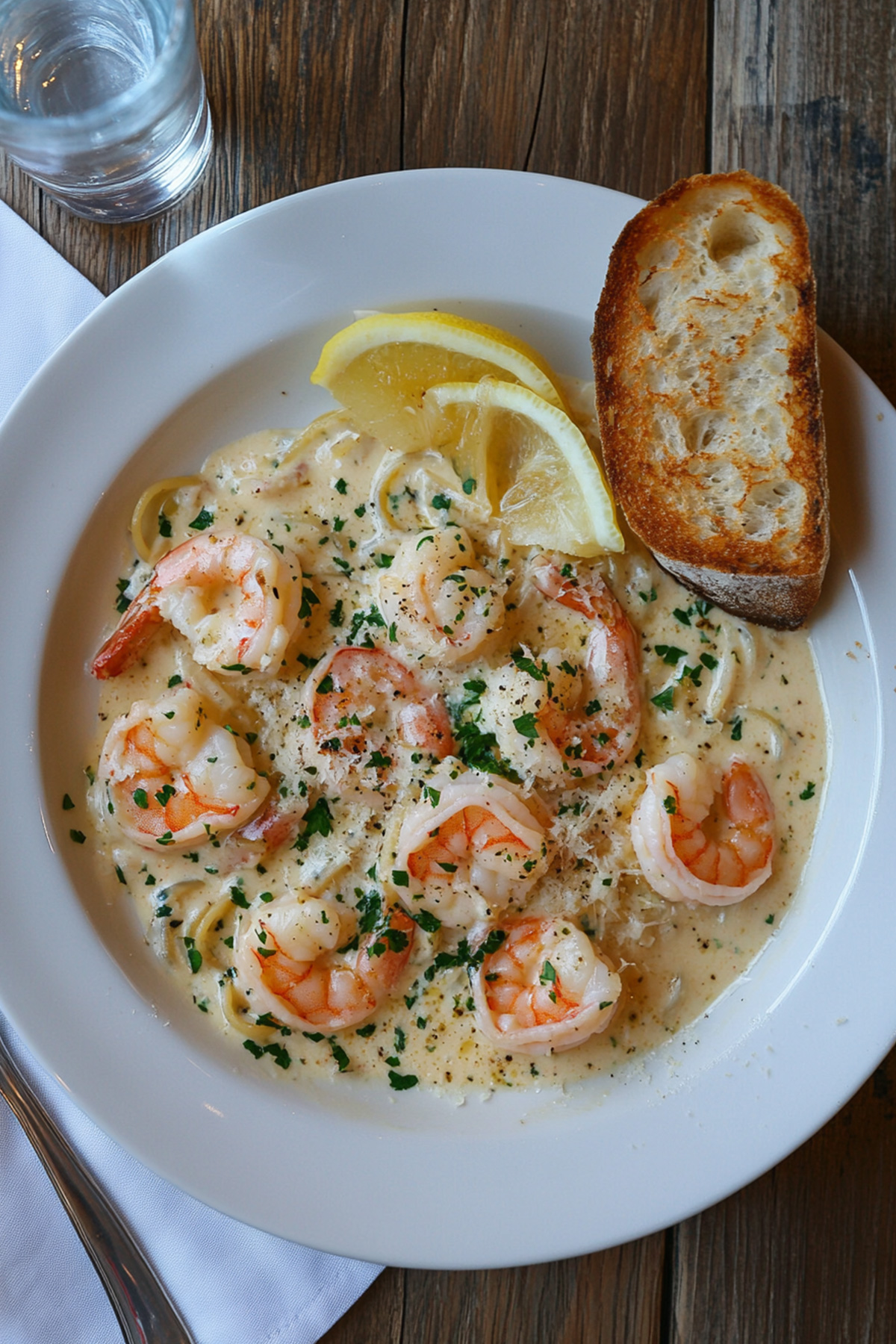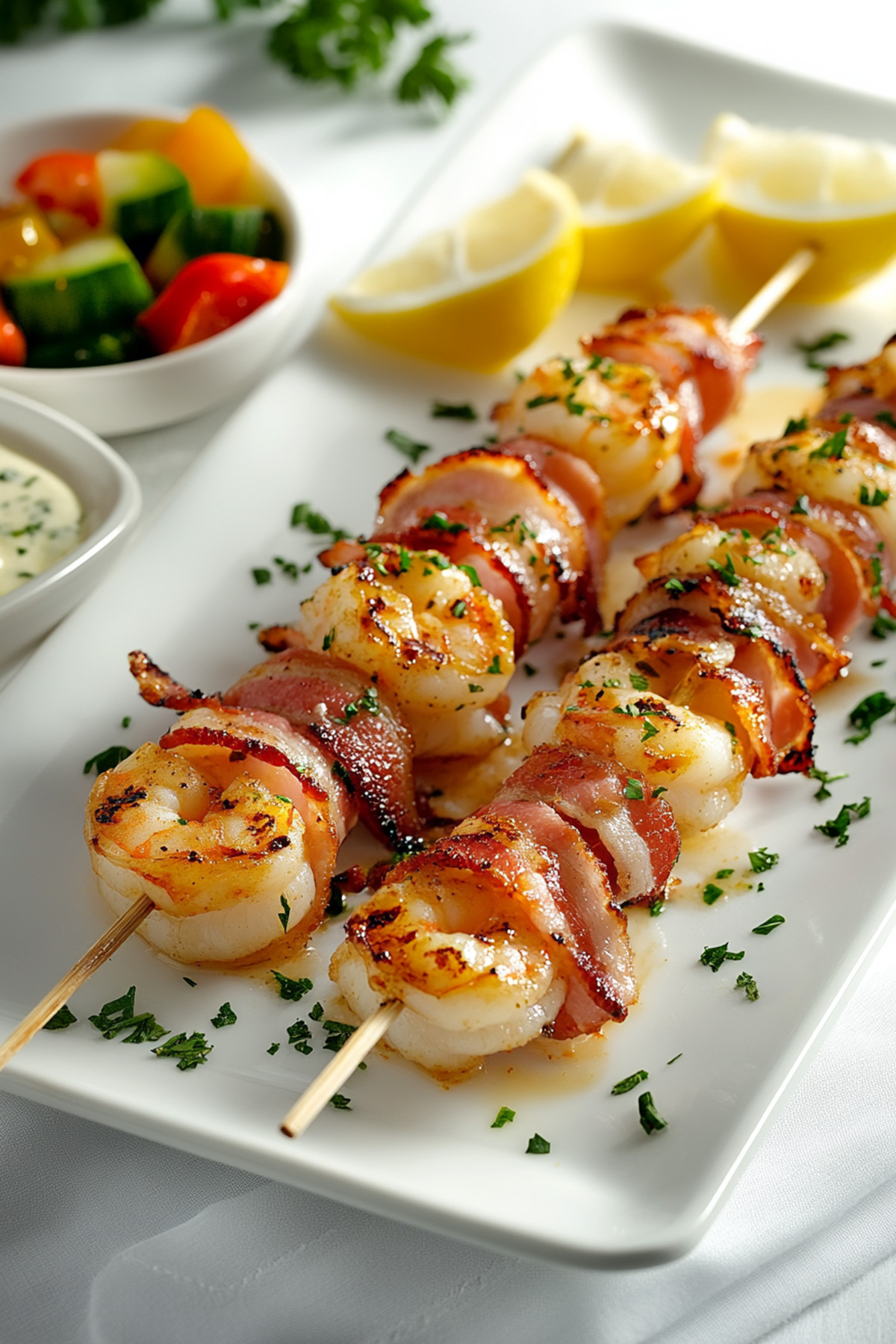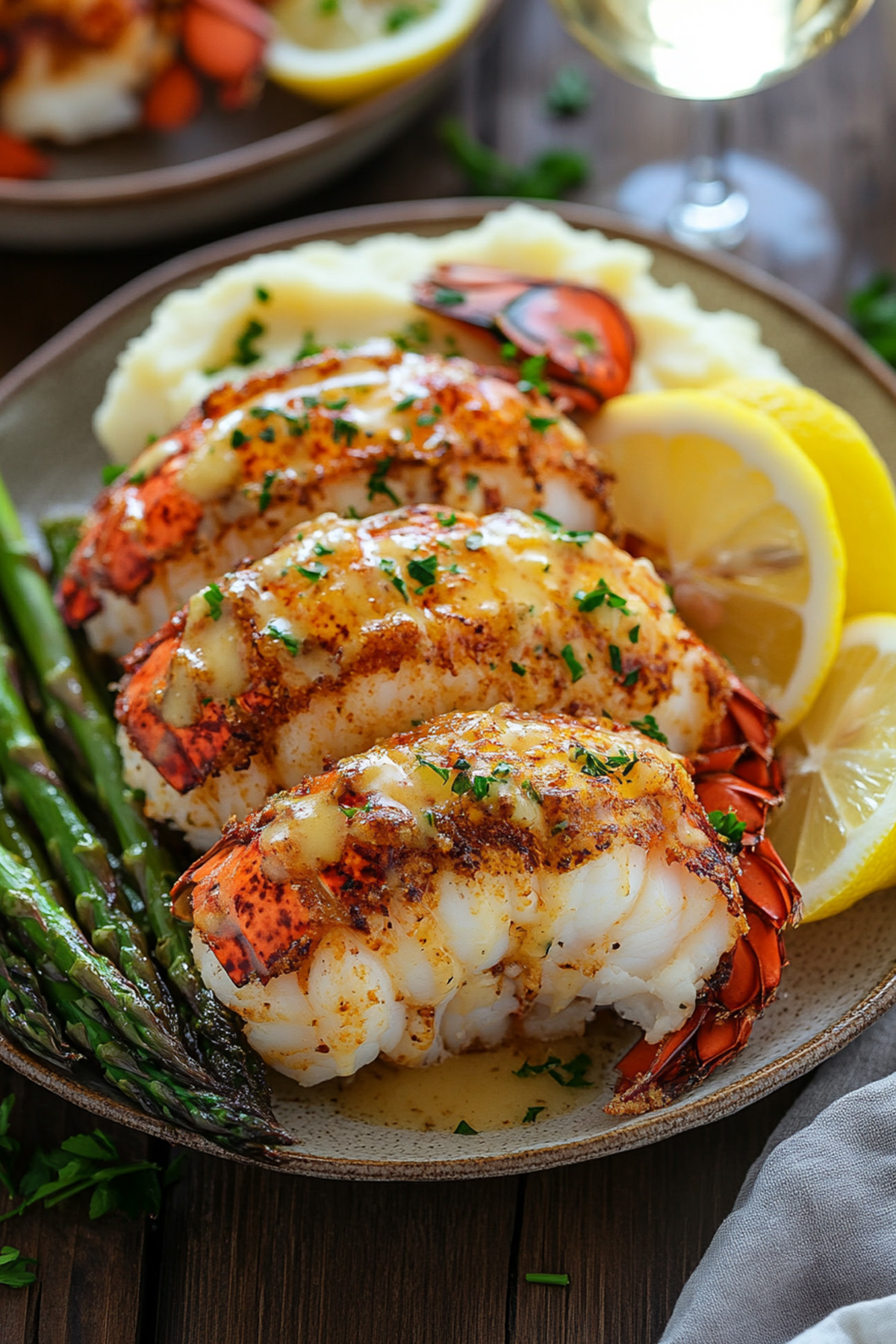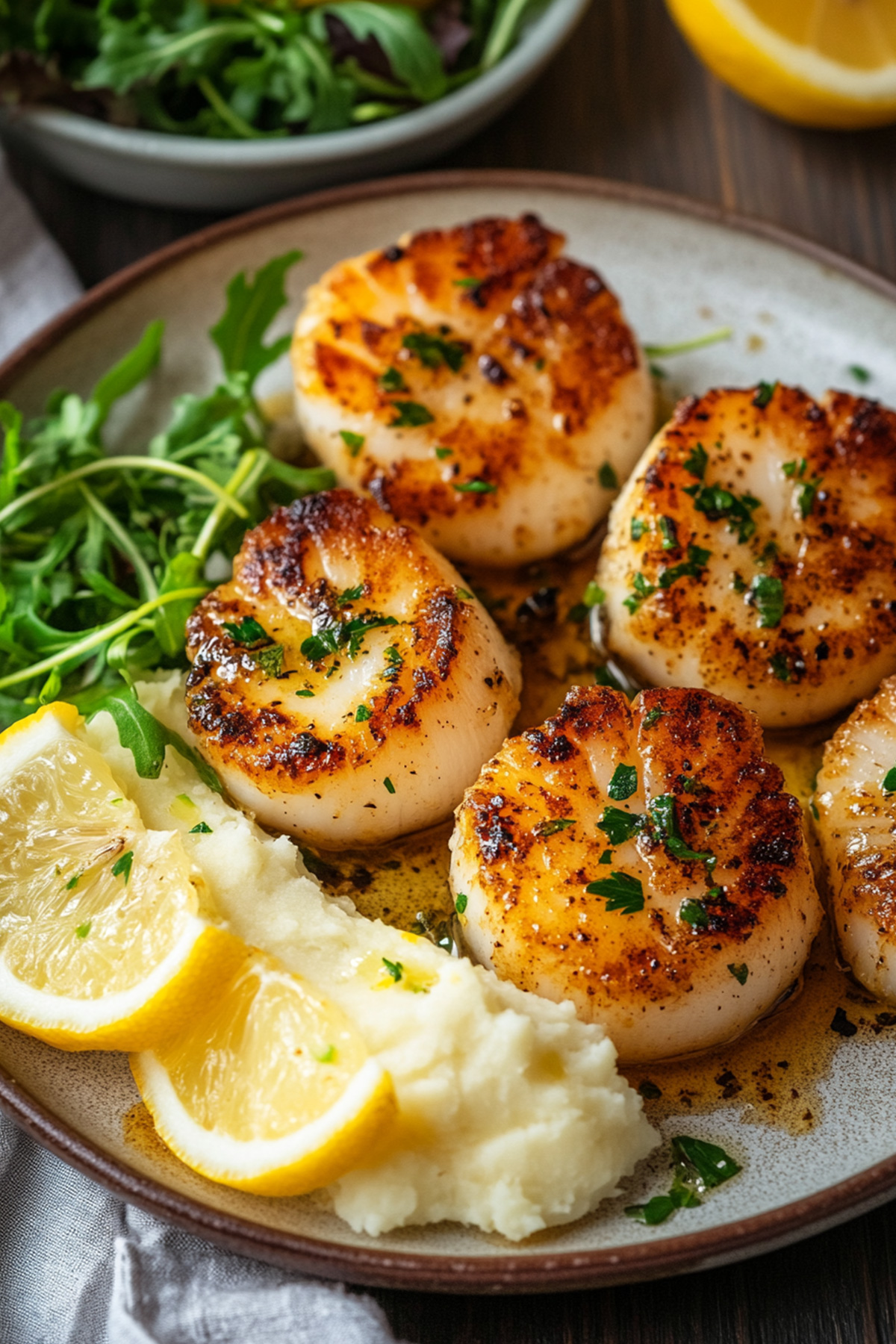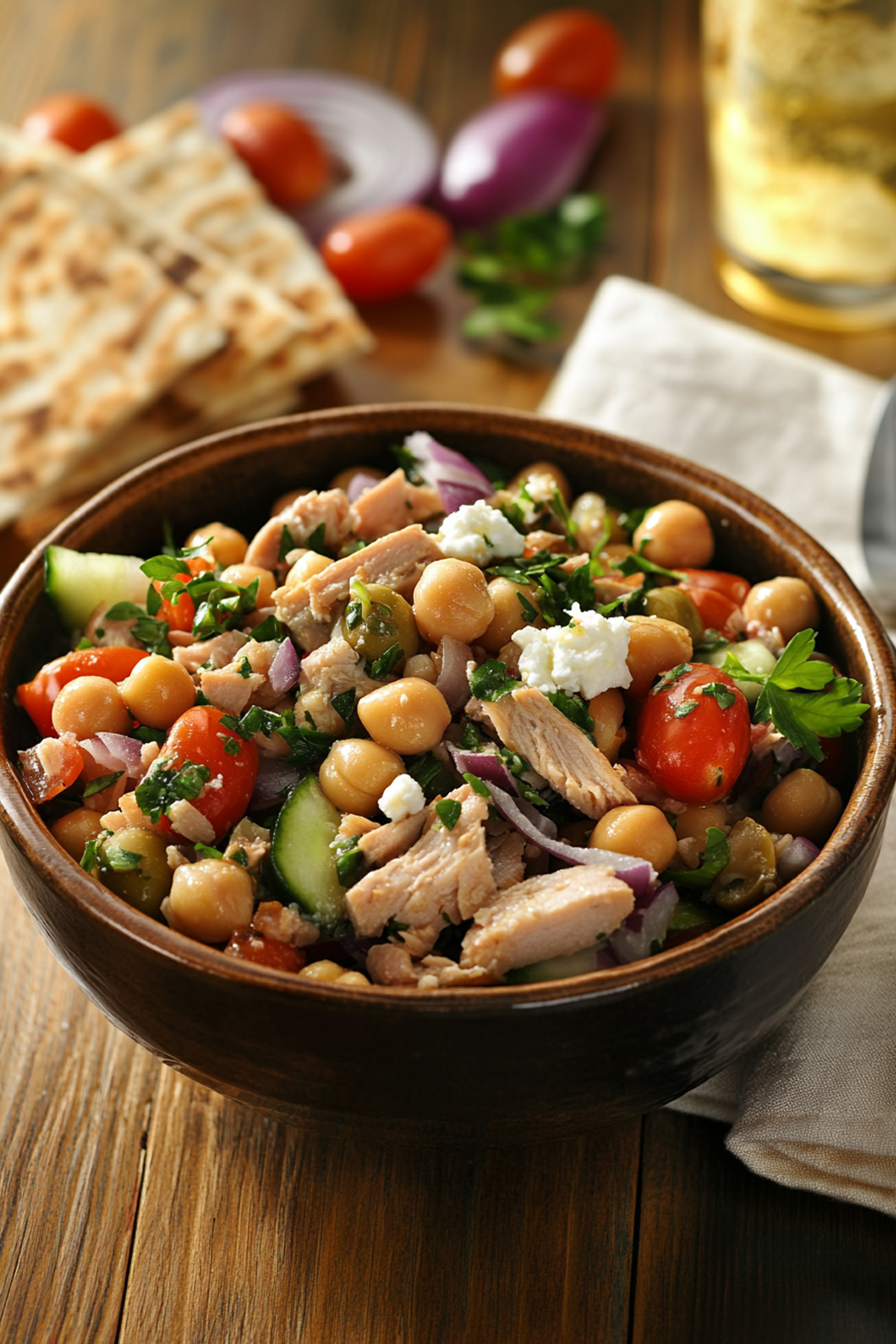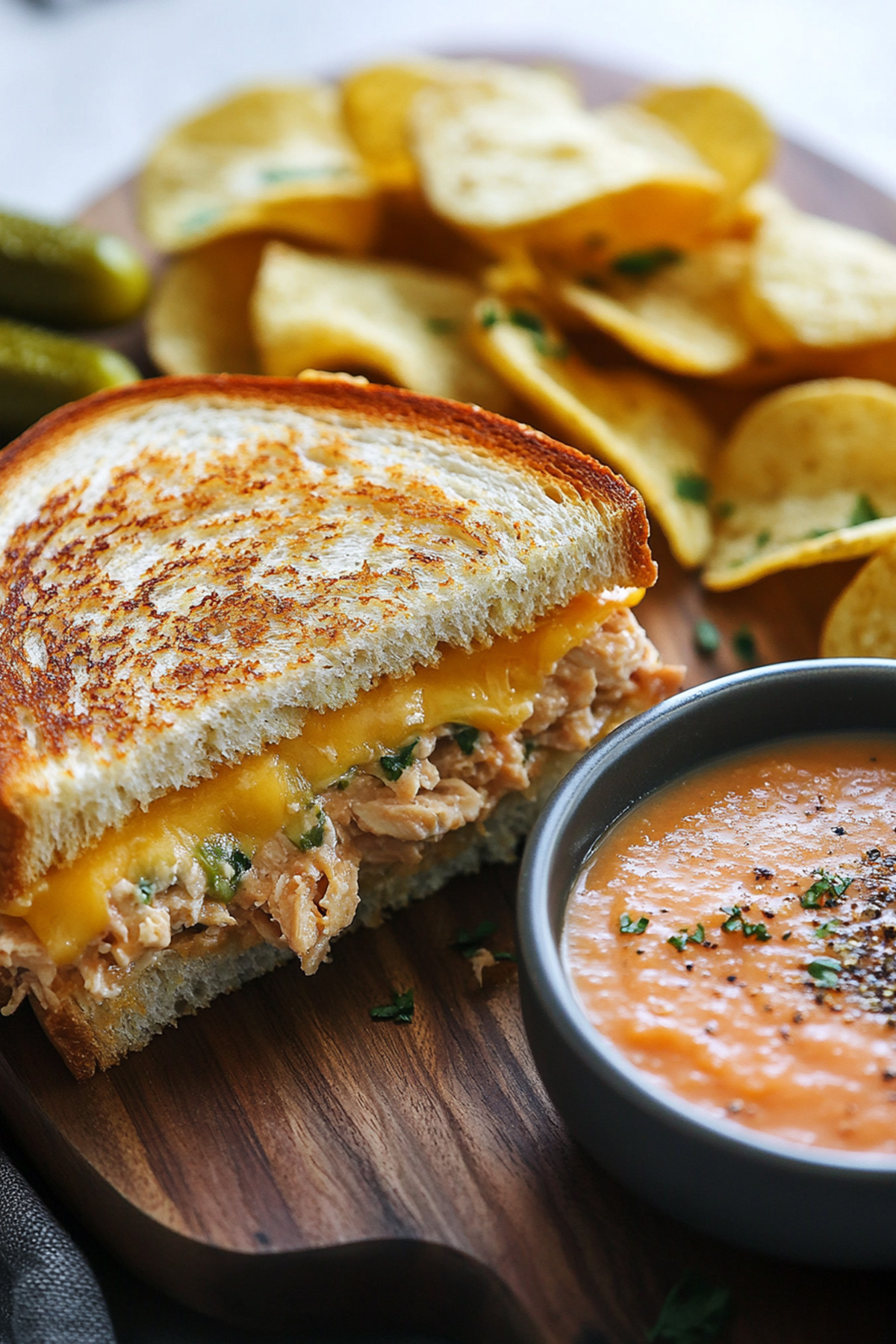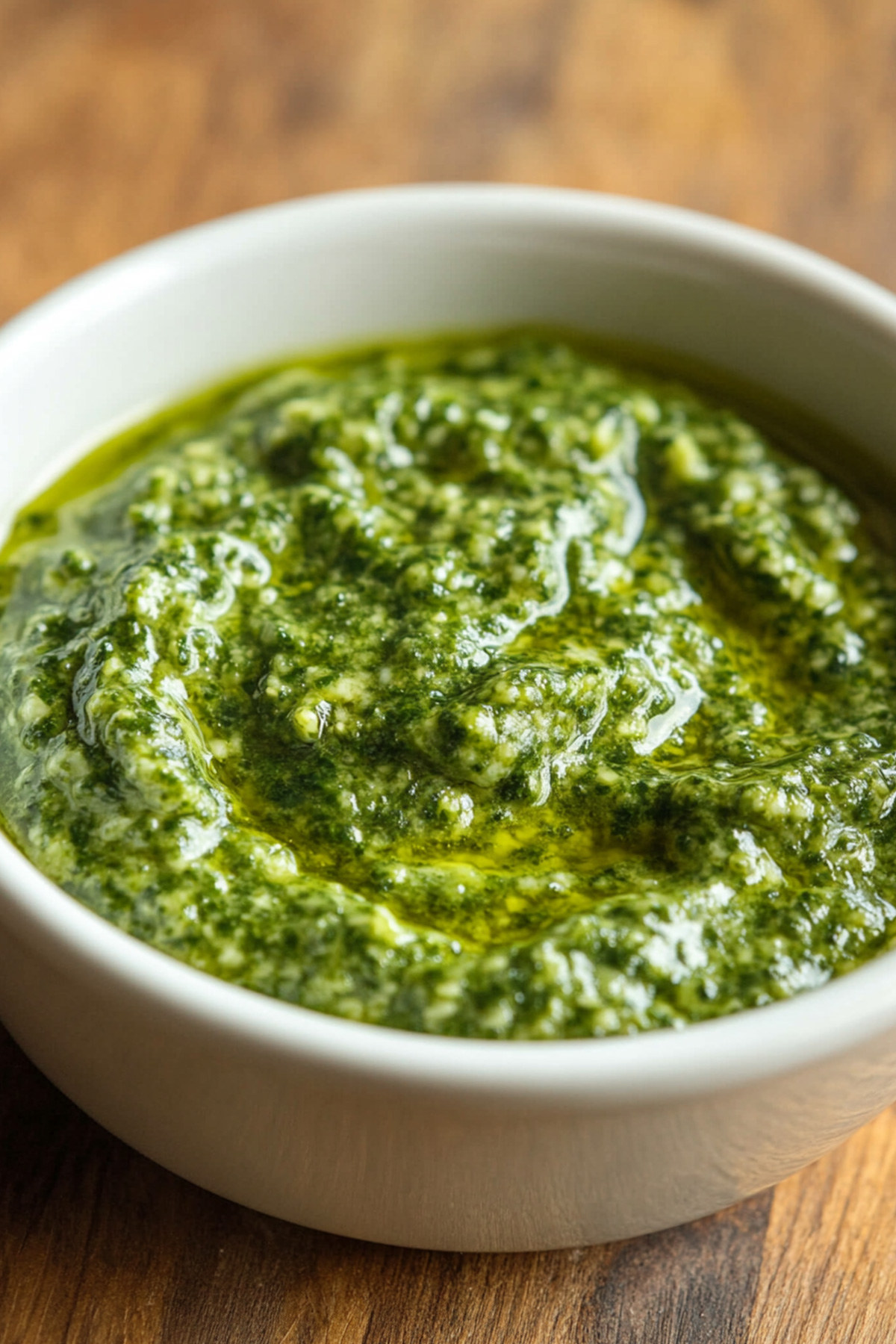Disclosure: As an Amazon Associate and participant in other affiliate programs, we earn from qualifying purchases. We only recommend products we believe will provide value to our readers.
So you’ve been craving that ultra-crispy, golden, mouthwatering mojarra frita – the kind you dream about after a beachside meal in Mexico… but every time you try to make it at home, it just ends up soggy, bland, or worst of all, falling apart. Sound familiar?
You’re not alone. Frying a whole fish to that shatteringly crisp, restaurant-quality perfection feels like a mystery. But guess what? It’s not. And today, I’m giving you the step-by-step secrets to finally nail it – no matter your skill level.
As usual, and as our readers know, we have a ‘Jump to Recipe’ button and a Table of Contents right after this intro to help you find exactly what you’re looking for – whether it’s the best oil to use, how to score the fish just right, or what classic Mexican sides to serve it with.
This guide isn’t just another basic fried fish recipe – it’s your go-to manual for mastering mojarra frita, with expert-tested techniques, preparation tips, and regional twists.
Stick with me, and you’ll never settle for soggy fish again.
Table of Contents
Why It’s So Hard to Nail Mojarra at Home
You followed the recipe. You used the right oil. You even scored the fish like they do in the beachside stalls. And yet… soggy. Greasy. Disappointing.
If you’ve been there—you’re not alone. The truth is, frying mojarra frita isn’t hard because it’s complicated. It’s hard because nobody tells you the real secrets that matter.
Fast Fact: Most home cooks fail at fried fish because their oil isn’t hot enough—or they don’t dry the fish well before frying. That alone can ruin the crunch.
The difference between a limp, greasy fish and a gloriously crisp mojarra frita often comes down to a few small, overlooked details:
- Moisture on the surface? Say goodbye to crisp skin.
- Fish too cold? It’ll drop your oil temp like a stone.
- Overcrowding the pan? Steam city. No crunch in sight.
💡 Did you know? Even using the wrong kind of pan (too thin, too small, or too light) can sabotage your fry job before you even get started.
But here’s the good news: once you understand these tiny mistakes and how to fix them, you unlock consistently crispy results every single time. (We’ll show you how in the recipe card and the next few sections.)
“If your fish doesn’t sing when it hits the oil, your oil’s too cold.”
– Probably every good Mexican grandma, ever.
Must-Have Tools for That Shatteringly Good Crunch
Let’s be real: even the best mojarra frita technique falls flat without the right tools. If your pan warps, your tongs flop, or your oil temp is playing games—you’re setting yourself up for failure.
But don’t worry – I’ve tested (and retested) what really works. Here’s your ultimate crispy-fish toolkit – everything you need is easily available on Amazon.
🍳 1. Heavy-Bottomed Cast Iron or Stainless Steel Skillet
 Check Price →
Check Price →Forget nonstick. What you need is heat retention and even distribution. Cast iron or quality stainless steel holds high heat beautifully – exactly what crispy fish demands.
Pro tip: Go at least 10–12 inches wide so the fish can lie flat without curling or overcrowding.
🌡️ 2. Deep-Fry Thermometer or Infrared Thermometer
 Check Price →
Check Price →Winging it with oil temp? That’s the fast track to sogginess. For mojarra frita, you want steady 350–375°F heat. A reliable thermometer is non-negotiable.
Pro tip: Oil that’s too cool = greasy. Too hot = burnt crust, raw fish.
🥄 3. Fish Spatula or Long Stainless Steel Tongs
 Check Price →
Check Price →Turning a whole mojarra without mangling it takes finesse – and the right tools. A flexible fish spatula lets you flip without tearing skin, while long tongs keep your hands safe.
🧻 4. Wire Rack + Paper Towels
 Check Price →
Check Price →Drain your fish like a pro: never put it straight on a plate. That just steams the crust. A wire rack over paper towels lets oil drip off while keeping everything crisp.
Did you know? Resting your fish on paper towels alone can make the bottom soggy. Always elevate.
🧂 5. Sharp Knife for Scoring
 Check Price →
Check Price →Scoring the fish helps it cook evenly and lets seasoning get deep into the flesh. A razor-sharp chef’s knife or utility knife makes this quick and clean.
How to Choose & Prep the Fish (Like a True Mexican Abuela)
Here’s the unfiltered truth: even with perfect technique, your mojarra frita will flop if the fish isn’t right. Texture, flavor, crispiness – all of it starts with choosing the right mojarra and prepping it the way every Mexican grandma does it: with love, salt, and a few sharp cuts.
🎯 What to Look For When Buying Mojarra
Mojarra is a generic name in Latin America for several types of freshwater fish, but in most Mexican-style recipes, it typically refers to tilapia—whole, mild, affordable, and ideal for frying.
Look for:
- Clear eyes: Cloudy means old. Fresh fish should look alive.
- Bright red gills: If they’re brown or dull, walk away.
- Firm flesh: Press gently—the skin should bounce back.
- No funky smell: A clean, oceany scent is what you want (nothing fishy, ironically).
🍅 Fast Fact: If your fish smells like ammonia or bleach, it’s way past its prime.
If you can, ask the fishmonger to gut and clean it for you. But always double-check at home—sometimes they miss bits!
🔪 How to Prep It Like an Abuela
This step is make-or-break. Prepping your fish properly does three things:
- Helps it cook evenly.
- Allows seasoning to penetrate deep.
- Makes it look amazing on the plate.
Here’s how to do it right:
1. Clean It Thoroughly
Even if it’s been cleaned at the market, rinse out the cavity under cold water and pat it dry with paper towels—moisture is the enemy of crispiness.
2. Score the Skin
Use a sharp knife to make 2–3 diagonal cuts on each side of the fish, about 1/2 inch deep. This does two things:
- Lets the heat penetrate for even cooking.
- Creates little flavor pockets for seasoning to soak in.
💡 Pro Tip: Don’t skip scoring! It’s the secret to perfectly seasoned flesh and gorgeous presentation.
3. Dry, Dry, Dry
Before seasoning, pat the fish completely dry—inside and out. The drier the skin, the crispier your final crust will be.
4. Generously Salt
Salt the fish generously, including inside the cavity and into the score marks. If you’re marinating with lime or garlic, let it rest in the fridge for 15–30 minutes (we’ll cover this in the technique section coming up…)
Read also: Zatarains Fish Fry Recipe
Game-Changing Mexican Techniques You Need to Know
Okay, you’ve got the right fish. You’ve cleaned, scored, and salted it like a seasoned abuela. Now let’s turn that good start into flavor fireworks. Because frying mojarra isn’t just about heat – it’s about ritual, rhythm, and seasoning with soul.
Here are the traditional Mexican secrets that separate “pretty good” from pure magic:
🧄 1. Garlic-Lime Marinade (The Pre-Fry Boost)
Before the fish even hits the oil, most Mexican cooks give it a quick soak in lime juice, minced garlic, and a little salt. This amps up the flavor and adds brightness that cuts through the richness of frying.
- Time: Let it marinate for 15–30 minutes in the fridge.
- Don’t overdo it: Too long, and the lime will start “cooking” the fish like ceviche.
Did you know? Lime juice slightly firms up the flesh, helping it hold together during frying.
🌽 2. Dust with Cornstarch for Extra Crunch
This one’s a sneaky modern trick with roots in old-school crispy fish stalls. Lightly dusting the fish with cornstarch or masa harina after marinating helps wick away moisture and delivers that extra crackle in every bite.
No need for a full batter. Just a whisper of cornstarch = crispy gold.
🔥 3. Hot Oil is Non-Negotiable
We said it before but it’s worth repeating: your oil needs to be between 350–375°F when the fish goes in. Drop it early, and it’ll absorb oil like a sponge. Wait until it sings.
- Use neutral oils with high smoke points: canola, peanut, or corn oil are great.
- Fry in batches if needed—never crowd the pan.
Fast Fact: Crowding = steam = sogginess. Give your mojarra room to dance.
🔁 4. Flip Just Once
This isn’t a pancake. Flip only when the underside is deeply golden and pulls away easily—about 5–6 minutes per side depending on size. Constant flipping breaks the crust and risks tearing the fish.
Trust the process. Let it do its thing.
✨ 5. Rest Before Serving
Once it’s golden and crispy, transfer it to your wire rack. Let it sit for 3–5 minutes before serving. This resting time helps the crust firm up and lets excess oil drip off without sogging the bottom.
Nail these five techniques, and your mojarra frita won’t just be crispy—it’ll be unforgettable. (Coming up next: the recipe card you’ve been waiting for 📝🔥)
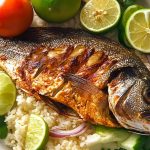
Mojarra Frita Recipe
- Total Time: 57 minutes
- Yield: 2 servings 1x
Description
Forget soggy, bland fish – this Mojarra Frita recipe delivers that restaurant-style crunch with juicy, flavorful flesh inside. Using classic Mexican seasoning, a garlic-lime marinade, and just the right fry technique, you’ll get perfectly crispy skin every time.
Whether it’s a weeknight dinner or a weekend feast, this whole-fried fish will steal the show at your table.
Ingredients
- 2 whole mojarra (or tilapia), cleaned, scaled, and gutted
- 4 cloves fresh garlic, minced
- 1 tsp ground cumin
- Salt and black pepper, to taste
- 1–2 fresh limes (for juice)
- Cornstarch or all-purpose flour, for dusting
- Vegetable oil (canola, corn, or peanut), for frying
- Optional: 1/2 tsp paprika or adobo seasoning for extra depth
Instructions
- Clean & Dry: Rinse the fish under cold water, making sure the cavity is clean. Pat dry thoroughly with paper towels—inside and out.
- Score the Fish: Use a sharp knife to cut 2–3 diagonal slashes on each side of the fish. This helps it cook evenly and absorb flavor.
- Season: Rub the garlic, cumin, salt, and pepper all over the fish, including into the slashes and the cavity.
- Marinate: Squeeze fresh lime juice over both sides of the fish. Let it rest in the fridge for 15–30 minutes.
- Dust: Lightly coat the entire surface of the fish with cornstarch or flour. Shake off any excess. This helps create a light, crispy crust.
- Heat the Oil: In a large, heavy skillet (preferably cast iron or stainless), heat ½–1 inch of oil to 350–375°F.
- Fry: Carefully place the fish in the hot oil. Let cook for 5–6 minutes per side, flipping once, until golden brown and crispy.
- Drain: Remove and place on a wire rack over paper towels to drain excess oil. Let rest for a few minutes before serving.
Notes
- ✂️ Always score the fish deeply enough to let seasoning in, but not so deep it breaks apart.
- 🌡️ Oil temperature is key – too low = soggy fish; too high = burnt outside, raw inside.
- 🍋 Don’t skip the marinating time – it adds flavor and slightly firms the flesh for better texture.
- 🥣 Cornstarch gives a lighter, crispier crust than flour. Try both and see what you prefer!
- Prep Time: 15 minutes
- Marinating Time: 30 minutes
- Cook Time: 12 minutes
- Category: Seafood
- Method: Frying
- Cuisine: Mexican
Is Mojarra Frita Healthy? (Spoiler: It’s Better Than You Think)
When it comes to indulging in mojarra frita, a traditional Mexican fried fish dish, many wonder about its health implications. The answer lies in understanding both the nutritional profile of the fish itself and the cooking method employed.
🎣 Nutritional Benefits of Mojarra (Tilapia)
Mojarra, commonly known as tilapia in many regions, is a nutrient-dense fish offering several health benefits:
- High-Quality Protein: A 3.5-ounce (100-gram) serving provides approximately 26 grams of protein, essential for muscle development, tissue repair, and overall bodily functions.
- Rich in Vitamins and Minerals: Tilapia is abundant in vital nutrients, including vitamin B12, niacin, phosphorus, selenium, and potassium. For instance, a single serving can deliver:
- Vitamin B12: 31% of the Recommended Daily Intake (RDI), crucial for nerve function and red blood cell formation.
- Selenium: 78% of the RDI, supporting metabolism and immune health.
- Phosphorus: 20% of the RDI, important for bone health.
- Low in Calories and Fat: With only about 128 calories and 3 grams of fat per serving, tilapia is a lean protein source suitable for various dietary preferences.
🍳 The Impact of Frying
While tilapia itself is nutritious, the healthiness of mojarra frita largely depends on the frying method:
- Caloric and Fat Content: Frying increases the calorie count and fat content of the dish. However, shallow frying with healthier oils can mitigate some negative effects.
- Omega-3 and Omega-6 Balance: Tilapia contains omega-3 fatty acids, beneficial for heart health, but also has a higher ratio of omega-6 fatty acids, which, in excess, may promote inflammation. Balancing your diet with other omega-3-rich foods is advisable.
🥗 Making Mojarra Frita Healthier
To enjoy mojarra frita more healthily:
- Choose Quality Oils: Opt for oils with higher smoke points and healthier fat profiles, such as canola or peanut oil.
- Control Portions: Pair your fried fish with nutrient-rich sides like salads or steamed vegetables to create a balanced meal.
- Moderation is Key: Enjoy fried foods in moderation as part of a varied diet to maintain overall health.
In conclusion, while mojarra frita is a fried dish, mindful preparation and consumption can allow you to savor its flavors without compromising on health.
References:
– Healthline
– WebMD
🌮 Classic Mexican Sides to Serve with Your Fish
Mojarra frita is a bold, crispy main—but it truly shines when surrounded by the vibrant, fresh flavors of traditional Mexican sides. The goal? Balance the richness of the fried fish with zesty, cooling, or comforting accompaniments.
Here are the classic combos you’ll find in coastal towns and home kitchens across Mexico:
🍅 1. Mexican-Style Rice (Arroz Rojo)
Fluffy, lightly fried rice simmered in tomato broth with garlic, onions, and spices. It’s a staple for a reason—its warm, savory depth is the perfect backdrop for crispy fish.
Fast Fact: In many Mexican homes, this rice is often made with chicken bouillon for added umami kick.
🥒 2. Cucumber & Radish Salad with Lime
Fresh cucumber, crunchy radish, sliced onions, and lots of lime juice—sometimes with a sprinkle of Tajín or chili powder. This side refreshes your palate after each crispy, salty bite.
💡 Pro Tip: Add chopped cilantro and jalapeño if you like a little heat.
🌽 3. Warm Corn Tortillas
Soft, steamy tortillas let you turn each bite of mojarra into a mini taco. Add rice, salad, and a squeeze of lime—it’s the DIY plate everyone loves.
“Fish taco, but make it abuela-style.”
🥑 4. Guacamole or Sliced Avocados
The creaminess of avocado balances the crunchy fish. Either mash it into a quick guac with lime, salt, and garlic—or serve thick slices with a sprinkle of salt.
Did you know? Avocados are rich in heart-healthy fats that can help balance out the fried element of the meal.
🌶️ 5. Spicy Salsa or Pickled Jalapeños
No mojarra frita plate is complete without something spicy. Whether it’s a roasted tomato salsa, a smoky chipotle version, or tangy pickled jalapeños, spice cuts through the richness beautifully.
💡 Bonus Tip: A splash of salsa over the fish itself adds brightness and depth.
With these classic sides, you’ve got a full Mexican coastal feast on your hands—vibrant, balanced, and absolutely irresistible.
Read also: Fried Pollock Fish Recipe
✨ Plating Tips: Make It Look as Good as It Tastes
You’ve fried your mojarra to crunchy perfection. The skin is golden, the aroma is incredible – and now it’s time to plate it like a pro.
Whether you’re serving it for Sunday lunch or impressing guests at a dinner party, these tips will help you present your fish with restaurant-worthy style.
🎯 1. Use a Large, Flat Plate or Platter
Mojarra is typically served whole, so you need space. Choose a wide plate with a neutral or earthy tone to let the golden fish pop. Avoid bowls or small plates—they crowd the presentation and trap steam (bad for the crunch!).
Pro Tip: Lay down a bed of lettuce or banana leaves for a touch of traditional flair and contrast.
🍽️ 2. Angle the Fish Slightly
Position the fish at a slight angle on the plate. It’s more dynamic and draws the eye in. If serving two fish, arrange them head-to-tail in a curved “yin-yang” style for balance and beauty.
🌈 3. Play with Color and Contrast
Add pops of color using:
- Lime wedges
- Pickled red onions
- Cucumber or radish salad
- Sliced avocado or guacamole
- Sprigs of cilantro
These not only brighten the plate but also offer functional flavor enhancements.
Did you know? Lime isn’t just garnish—it helps cut the richness of fried fish and adds acidity to balance the dish.
🌶️ 4. Serve Salsa or Sides in Small Bowls
Instead of crowding the plate, serve salsa, beans, or rice in separate ramekins or small bowls around the main plate. This keeps textures from mixing and adds a touch of elegance.
🧂 5. Finish with a Sprinkle
Right before serving, give the fish a final sprinkle of flaky sea salt or a dash of chili powder or Tajín. It adds visual appeal and gives a fresh boost of flavor right at the table.
“Good food is cooked with love, but great food is plated with pride.”
With these easy tweaks, your mojarra frita won’t just taste amazing—it’ll look like it belongs in a seaside restaurant on the Mexican coast.
You may like: How to Cook Fried Red Snapper Fish
🧊 Store & Reheat Without Losing the Crunch
Let’s face it – leftover mojarra frita can go from crispy delight to soggy regret if you don’t store and reheat it the right way. But don’t worry – I’ve got your back. With a few simple steps, you can bring it back to life the next day without the rubbery skin or sad texture.
Here’s exactly how to do it:
🗂️ Storage & Reheating Guide
| Step | Do This | Why It Matters |
|---|---|---|
| 🧊 Cool Properly | Let the fish cool completely on a wire rack before storing. | Prevents steam buildup that causes sogginess. |
| 📦 Wrap Carefully | Wrap loosely in parchment paper, then place in an airtight container. | Keeps the crust from softening while still preserving moisture. |
| ❄️ Refrigerate Promptly | Store in the fridge within 1–2 hours of cooking. | Keeps it safe to eat and slows down texture breakdown. |
| ♨️ Reheat in the Oven or Air Fryer | Heat at 375°F (190°C) for 8–10 minutes in a preheated oven or air fryer. | Restores the crispy exterior without overcooking the inside. |
| 🚫 Avoid Microwaving | Do not use a microwave to reheat. | Makes the crust soggy and the fish rubbery. Trust me—just don’t. |
💡 Pro Tip: If reheating in the oven, place the fish on a wire rack over a baking sheet to allow air to circulate underneath—it crisps up beautifully!
How Long Does It Last?
Stored properly, your mojarra frita will stay fresh in the fridge for up to 2 days. After that, the texture and flavor start to decline significantly.
🧭 Regional Variations Worth Trying
While mojarra frita is beloved across Mexico, the way it’s prepared and served shifts as you move from coast to inland, from north to south. Each region adds its own spin – sometimes subtle, sometimes bold – but always rooted in local flavors and culture.
Here are a few delicious regional variations you’ll want to try (or recreate!):
🌊 Veracruz Style
Flavor Focus: Garlic, citrus, and herbs
What Makes It Unique: In coastal Veracruz, mojarra frita is often marinated with ajo (garlic), limón (lime), and epazote or oregano, then served with arroz a la tumbada (a rich seafood rice) or fried plantains.
Think: bright, aromatic, and rustic coastal charm.
🐚 Sinaloa Style
Flavor Focus: Bold heat, bright acidity
What Makes It Unique: In this northwestern state, you’ll often find mojarra served with a side of pickled vegetables, extra lime, and spicy salsas – sometimes even bathed in a piquín chili sauce post-fry.
It’s a fiery, flavor-packed experience that hits hard in all the right ways.
🏞️ Michoacán Style
Flavor Focus: Simplicity with soul
What Makes It Unique: Inland regions like Michoacán focus on clean frying with minimal marinade, letting the quality of the fish and the crispiness shine. Often paired with nopales salad or beans and fresh tortillas.
It’s humble, hearty, and deeply satisfying.
🌴 Yucatán Style
Flavor Focus: Citrus and spice fusion
What Makes It Unique: Influenced by Mayan cuisine, Yucatán-style fried fish may be marinated in naranja agria (sour orange) and served with xnipec – a fresh, spicy salsa made with habanero and red onion.
Expect zippy flavors and serious personality.
🐟 Baja Style
Flavor Focus: Fusion and freshness
What Makes It Unique: While Baja is more famous for fish tacos, mojarra frita still shows up – often topped with shredded cabbage, crema, and a drizzle of chipotle mayo. You’ll sometimes find it wrapped in a tortilla for a street-food-style twist.
It’s modern, playful, and perfect for taco lovers.
No matter where you go in Mexico, mojarra frita tells a story – and you can bring those flavors into your kitchen with just a few tweaks to marinade, sides, or toppings.
Final Tips You’ll Wish You Knew Sooner
Alright, now you’ve got everything you need to fry mojarra like a total pro – from choosing the freshest fish to nailing that crispy finish and pairing it with the perfect sides. But before you head off to heat that oil, here are a few parting gems I’ve picked up along the way:
🐟 Quick-Fire Tips from My Kitchen to Yours:
- Score deeply, not messily. Clean cuts = even cooking.
- Oil temp is sacred. Invest in a thermometer—you won’t regret it.
- Don’t skip the wire rack. It’s the crispy fish’s best friend.
- Fresh lime is non-negotiable. It brightens and balances everything.
- One flip only. Resist the urge to fuss.
This is actually the fourth time I’ve updated this article to make it better for our readers. Why? Because you deserve the best. Each time I learn something new – from the kitchen, from feedback, or from other cooks – I come back and make it better.
Got a question I didn’t answer? Or a tip you’ve tried that works wonders?
Drop it in the comments! I read every one and would love to help you out (or hear your version of mojarra frita!).
Thanks for being here – and happy frying! 🐟🔥

